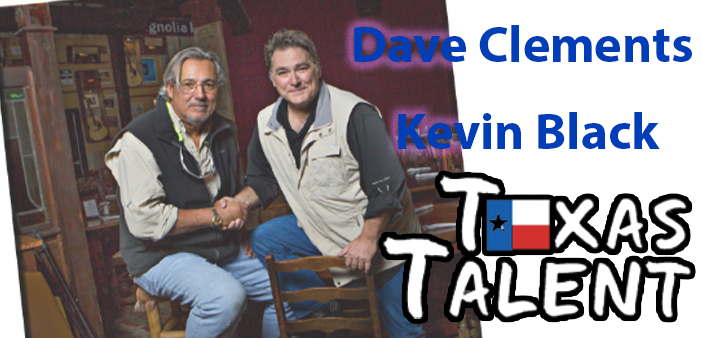Photos by Gina Turner
The period between 1830 and 1850 brought many new inventions to America and across the world, including the mechanical reaper, which revolutionized farming, the building of railroads, and patents by Louis Daguerre for his camera and Samuel Colt for the revolver. Hans Christian Andersen published his first book of fairy tales in 1835. This era also birthed several prominent names, including poet Emily Dickinson, French sculptor Frederic-Auguste Bartholdi, creator of the Statue of Liberty, and Wyatt Earp, legendary gambler and lawman who was famous for his part in the gunfight at O.K. Corral in Tombstone. These years also witnessed major events, including the California Gold Rush, the siege of the Alamo, and the annexation of Texas into the United States.
During this same period of time in Texas, near what is now the Willis and New Waverly area, the Olbrych family, immigrants from Poland, built a small log cabin and lived in it until the 1920s, when they built a new house in close vicinity to the cabin. Life was hard while living in the dog-run-style cabin, their first residence. They worried about the nomadic Karankawa Indians and the Yellow Fever epidemic. Work on the farm was strenuous as they cleared property, sold the lumber, farmed cotton and corn, and later produced tobacco for the Willis cigar factory. Several generations of the Olbrych family lived in this simple cabin and endured the challenges that life brought forth. The two-room structure included a living room and fireplace on one side of the open-air “dog-run,” and a kitchen and area for other activities on the other side. The children slept in the attic.

From the distant past, we now move to the recent past, 1982, when Willy and Inge Liesner bought the property. As Willy states, “The property was a wasteland, covered with weeds and strewn with waste and trash, and the soil was depleted from the single-crop farming of tobacco and cotton.” Growing up in Germany, 12-year-old Willy and a friend would work a plow together to ready the soil for planting.
As he mentioned, men were somewhat of a scarcity after the war, and he had to work hard on a neighbor’s farm to help his family. In the process, he fell in love with the land; watching it produce its bounty was a delight. This love has been instrumental in his effort to transform this new property into a productive, beautiful, and bountiful vineyard and winery which they named TOSCA, after their favorite opera by Giacomo Puccini. The old log cabin is now a featured treasure and highlight of the winery. The cabin was moved to its present location on the property and has been fully restored to become the beautiful and charming Tasting Room for the Tosca Winery.

Restoring the log cabin involved hours of labor with the goal of preserving as much historical detail as possible. In the original construction, the Olbrychs followed the practice of the day, combining straw and cow manure, both readily available, to fill gaps between logs to keep out wind and weather. This insulation had to be removed from the walls and flooring, and the process proved to be a time-consuming one. After its removal, the gaps between logs were covered with wooden beams in the interior of the rooms to help retain the original appearance and ambiance of the room. Other than this added wood, the walls are original and display axe marks which attest to the hand-built process used in their construction. A beautiful serving bar was added, and solid wood tables and chairs now adorn the tasting room to provide guests the charming atmosphere they hope to find as they relax and enjoy time with friends.

The dog-run cabin features the tasting room on one side, with the other side being restored to include a full-size kitchen. Water and electricity, as well as telephone lines, were added during its renovation, making it fully functional for modern day life. Some of the support structure had to be replaced, as well as the entire roof and shingles, with the cedar shingles being installed in accordance to the original style. During the move, the white stone chimney had to be disassembled piece by piece. The stones were cleaned, and the chimney was reconstructed onto the house at its new location. The addition of a sliding wooden door to enclose the dog-run area has made this area “weatherproof” during storms. Willy shared that he and Inge rode out a hurricane in the cabin. They cooked on a gas grill and camped out in the dog-run. On many occasions, they enjoy sitting on the porch which overlooks the beautiful property and the vineyard, sipping a glass of their favorite Tosca vino. The entire venue is now also available to host small (up to 50 people) parties such as weddings, birthday parties and corporate events.
A vine-covered archway leads to the steps and front porch of this charming and revitalized log cabin. Who would have ever known that this old structure could be so valuable and utilized in such a prominent way at Tosca? A carbon dating test was performed on the cabin which verified its original construction being between 1830-1850. One can only imagine the hours of hard labor, with what today would be considered the simplest of tools, that went into its construction. And one can only guess at the conversations, the sad times and tears, the celebrations, and family fun that this small structure witnessed. It has endured the test of time through 38 United States Presidents, the Civil War and Reconstruction, the inventions of the airplane and automobile, two World Wars, the Apollo moon landing, the computer age and internet communication….we could go on and on. The point is that, through almost two centuries, this cabin is still in existence and being fully utilized for the pleasure and enjoyment of those who enter its doors to discover its rustic, charming, and history-laden atmosphere. Come and enjoy your favorite wine at the Tosca cabin and try to imagine your own family enduring life day-to-day and year-to-year in a two-room dog-run log cabin in the 1830s. Then thank Willy and Inge Liesner for their vision and the tremendous effort they have made to restore this exquisite piece of history.




